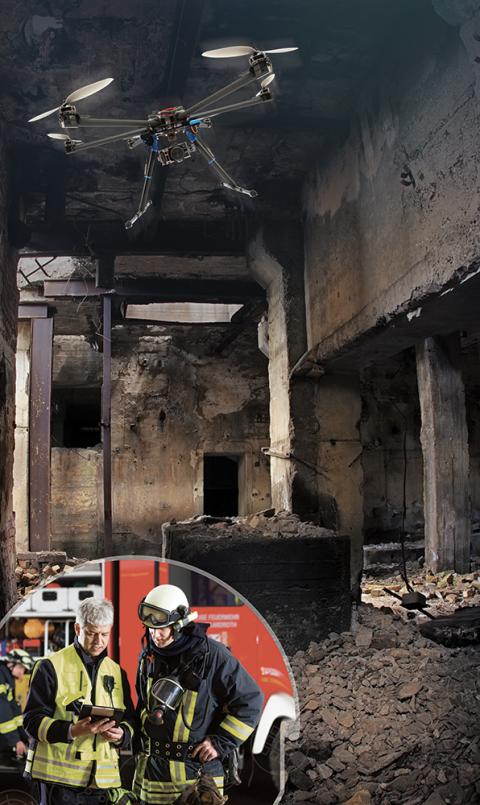Draper Led Team to Demonstrate Safer, Smarter UAVS
CAMBRIDGE, MA – The mission of clearing buildings remains among the most dangerous operations performed by military teams and first responders. Personnel searching for hidden combatants or trapped victims must move quickly through hazardous and unfamiliar spaces, facing life-or-death situations around each corner. A smart robotic scout could help perform rapid interior reconnaissance while search teams safely monitor progress from the outside, but walls, doors, and cluttered spaces make it difficult for operators to pilot the vehicles indoors.
Towards this vision, the Defense Advanced Research Projects Agency (DARPA) awarded contracts to Draper and two other industry teams to create unmanned aerial vehicles (UAVs) that autonomously sense and maneuver through unknown environments without external communications or GPS under the Fast Lightweight Autonomy (FLA) program. The program seeks UAVs that weigh less than three kilograms, and can fly at speeds up to 65 feet per second.
Under its $3.4 million FLA contract, the Draper team will develop and implement advanced perception and autonomy algorithms to be hosted on a common flight platform. The team will employ unique sensor and algorithm configurations, with time-trials and performance evaluations conducted in indoor/outdoor venues. Inspired by nature’s winged predators, the Draper team, which includes the Massachusetts Institute of Technology (MIT), leverages expertise in autonomous path planning, machine vision, GPS-denied navigation, and dynamic flight controls.
“Developing a system that can recognize and respond to its environment quickly while flying nearly 45 miles per hour in a real world environment presents considerable challenges,” said Steve Paschall, Draper’s FLA technical director. “Our sensing and algorithm configurations must enable the vehicle to demonstrate agile maneuvering, high reliability, and safety, as any errors at high speed could be catastrophic. Such high speeds dictate that the vehicle handle planning and control with low-latency sensing and processing.”
The MIT research, led by professor Nick Roy, FLA principal investigator, will enable perception at varying time- and length-scales, performs computationally efficient trajectory generation and avoidance maneuvers, and allow for accurate decision-making and control through formal performance and safety guarantees.
This approach promises rapid and safe flight in unknown environments and the software developed will eventually be released as open source to further advance the state-of-the-art in UAV autonomy.
Released October 14, 2015

